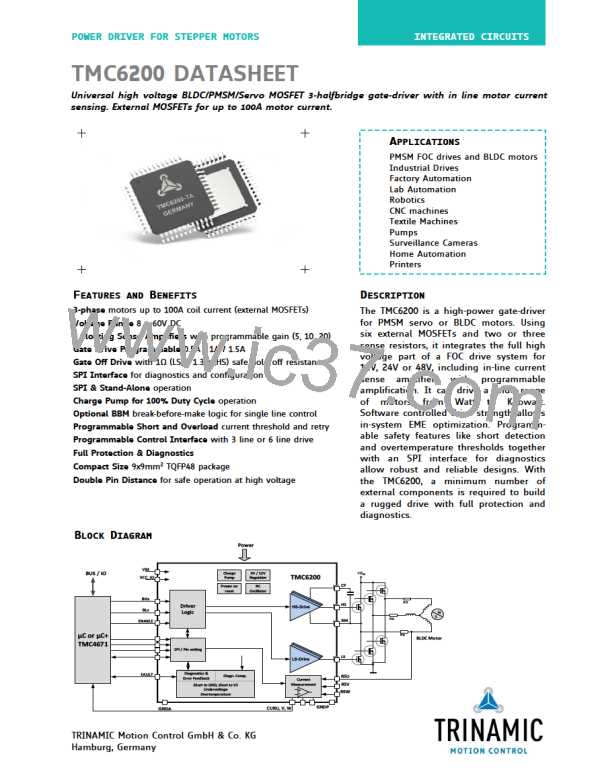TMC6200 DATASHEET (Rev. 1.01 / 2018-NOV-15)
37
11.3 Thermal Characteristics
The following table shall give an idea on the thermal resistance of the package. The thermal
resistance for a four-layer board will provide a good idea on a typical application. Actual thermal
characteristics will depend on the PCB layout, PCB type and PCB size. The thermal resistance will
benefit from thicker CU (inner) layers for spreading heat horizontally within the PCB. Also, air flow will
reduce thermal resistance.
Parameter
Symbol Conditions
Typ
Unit
Typical power dissipation
PD
20kHz chopper, 24V supply, internal
<0.5
W
supply regulators
Thermal resistance junction to
ambient on a multilayer board
RTMJA
Dual signal and two internal power
plane board (2s2p) as defined in
JEDEC EIA JESD51-5 and JESD51-7
(FR4, 35µm CU, 70mm x 133mm,
d=1.5mm)
21
K/W
Thermal resistance junction to
board
RTJB
RTJC
PCB temperature measured within
1mm distance to the package leads
8
3
K/W
K/W
Thermal resistance junction to
case
Junction temperature to heat slug of
package
Table 11.1 Thermal characteristics TQFP48-EP
The thermal resistance in an actual layout can be tested by checking for the heat up caused by the
standby power consumption of the chip. When no motor is attached, all power seen on the power
supply is dissipated within the chip.
www.trinamic.com

 TRINAMIC [ TRINAMIC MOTION CONTROL GMBH & CO. KG. ]
TRINAMIC [ TRINAMIC MOTION CONTROL GMBH & CO. KG. ]